Price: $199.99 - $159.99
(as of Jul 04, 2024 01:35:36 UTC – Details)
Product Description …
Customers say
Customers like the portability of the solar panel, saying it’s very light weight and easy to carry. They also appreciate the value for money, saying the cost benefit is amazing. Customers also like the ease of setup, saying everything sets up and breaks down easy. However, some customers have reported issues with the power output, saying they only get to 87W at top. Customers have different opinions on cables, charging, and quality.
AI-generated from the text of customer reviews



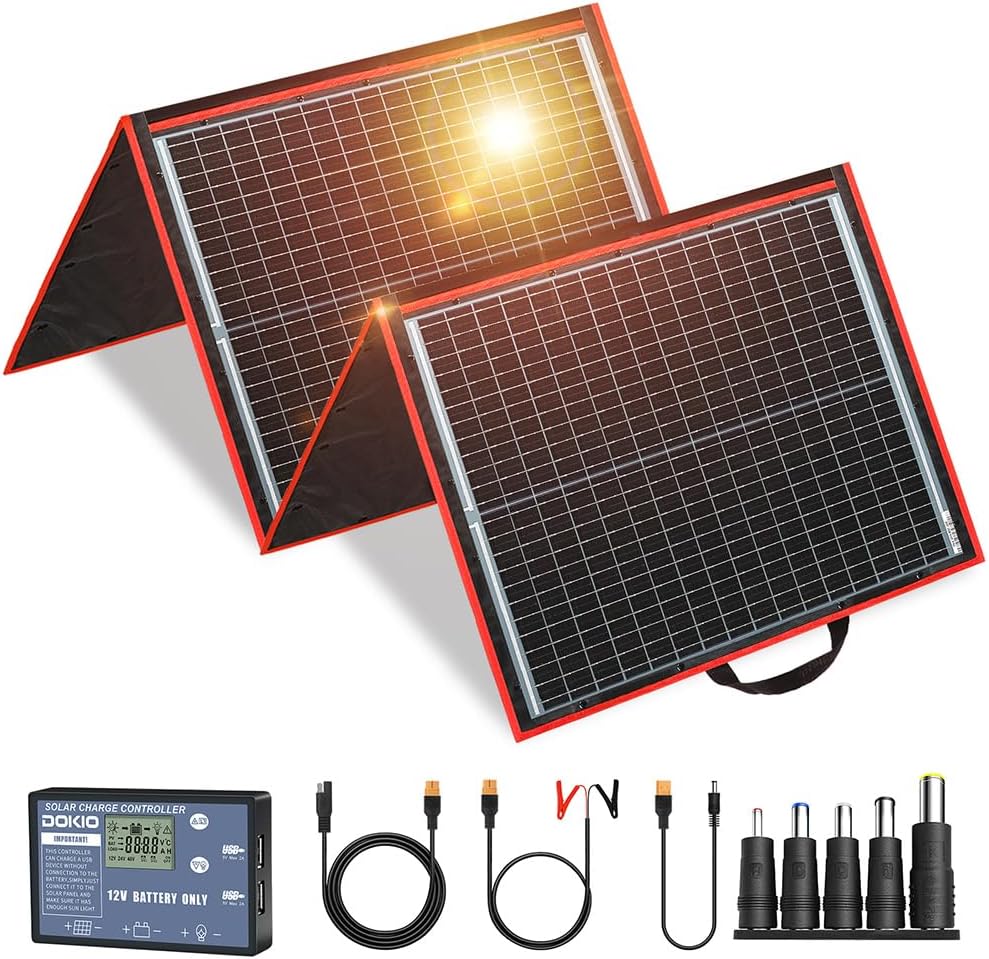
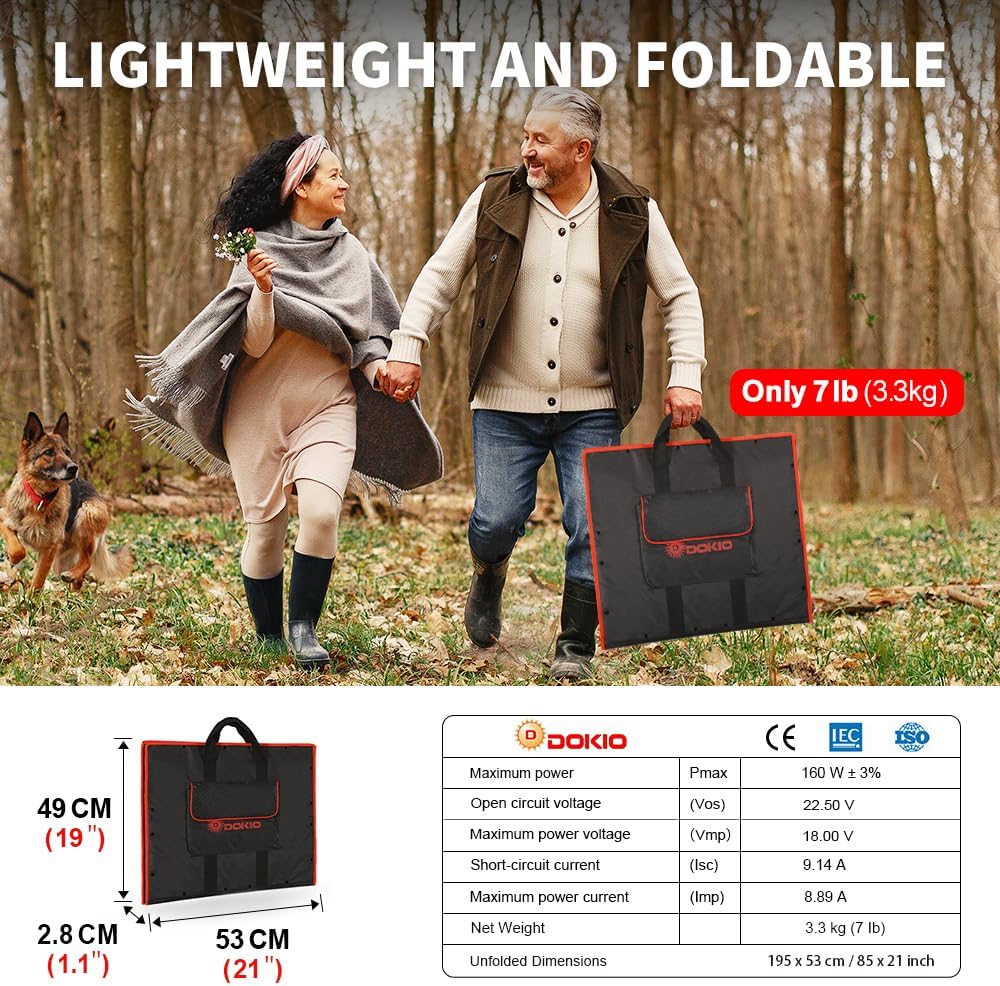
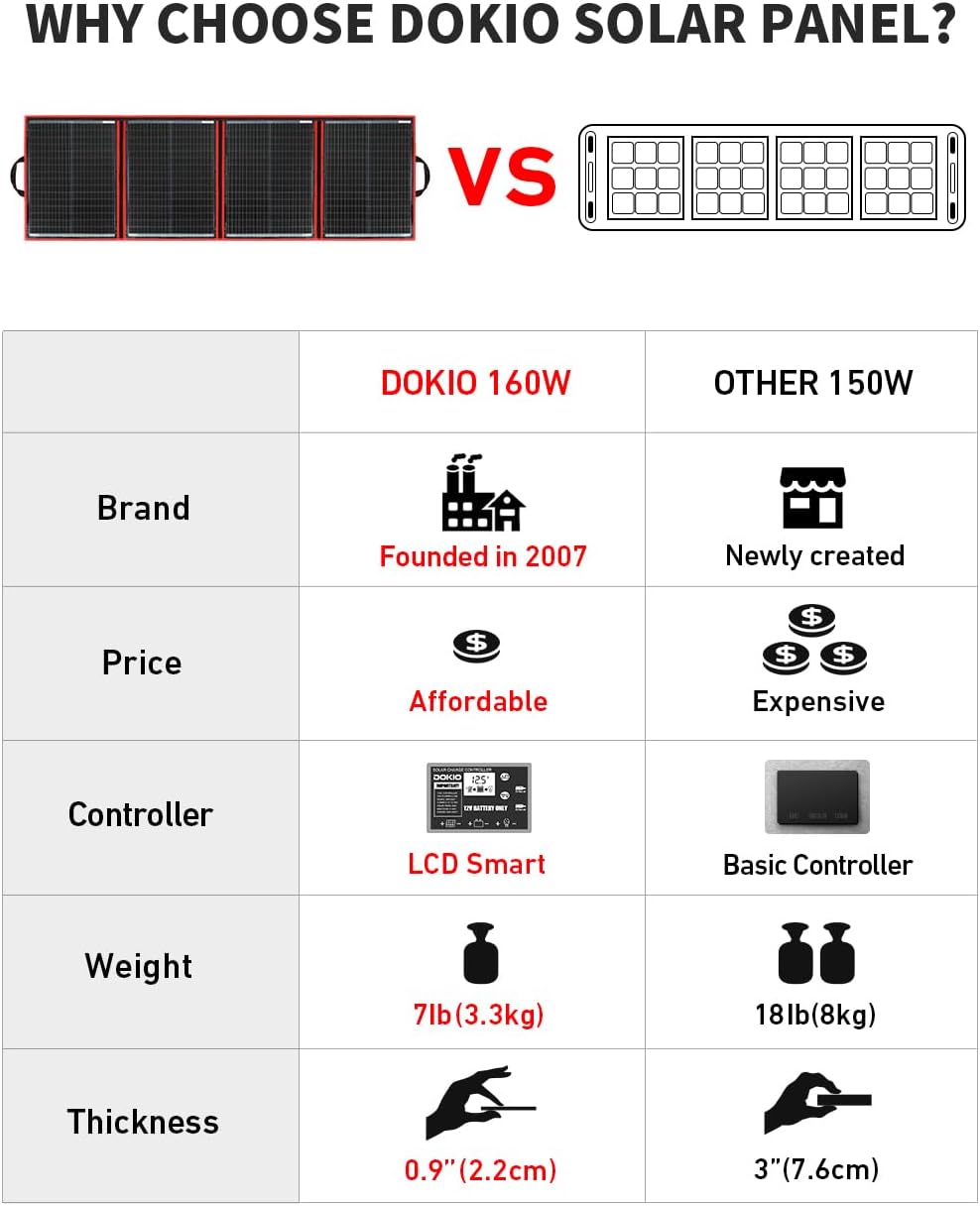
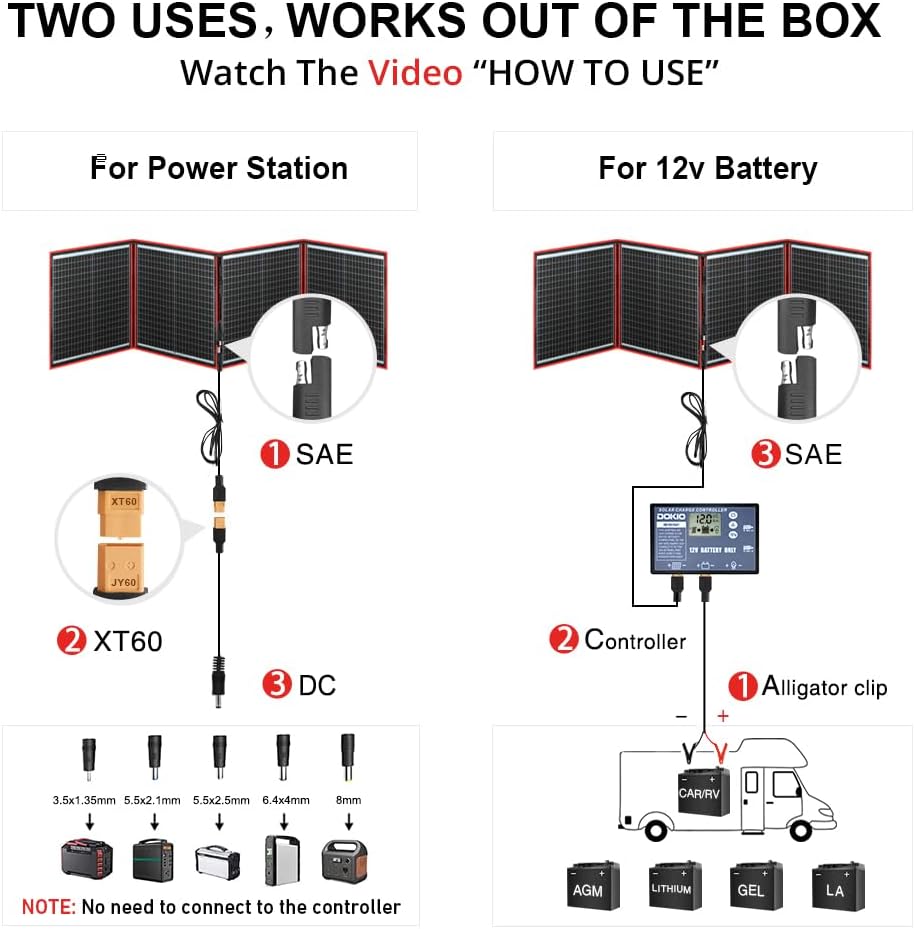
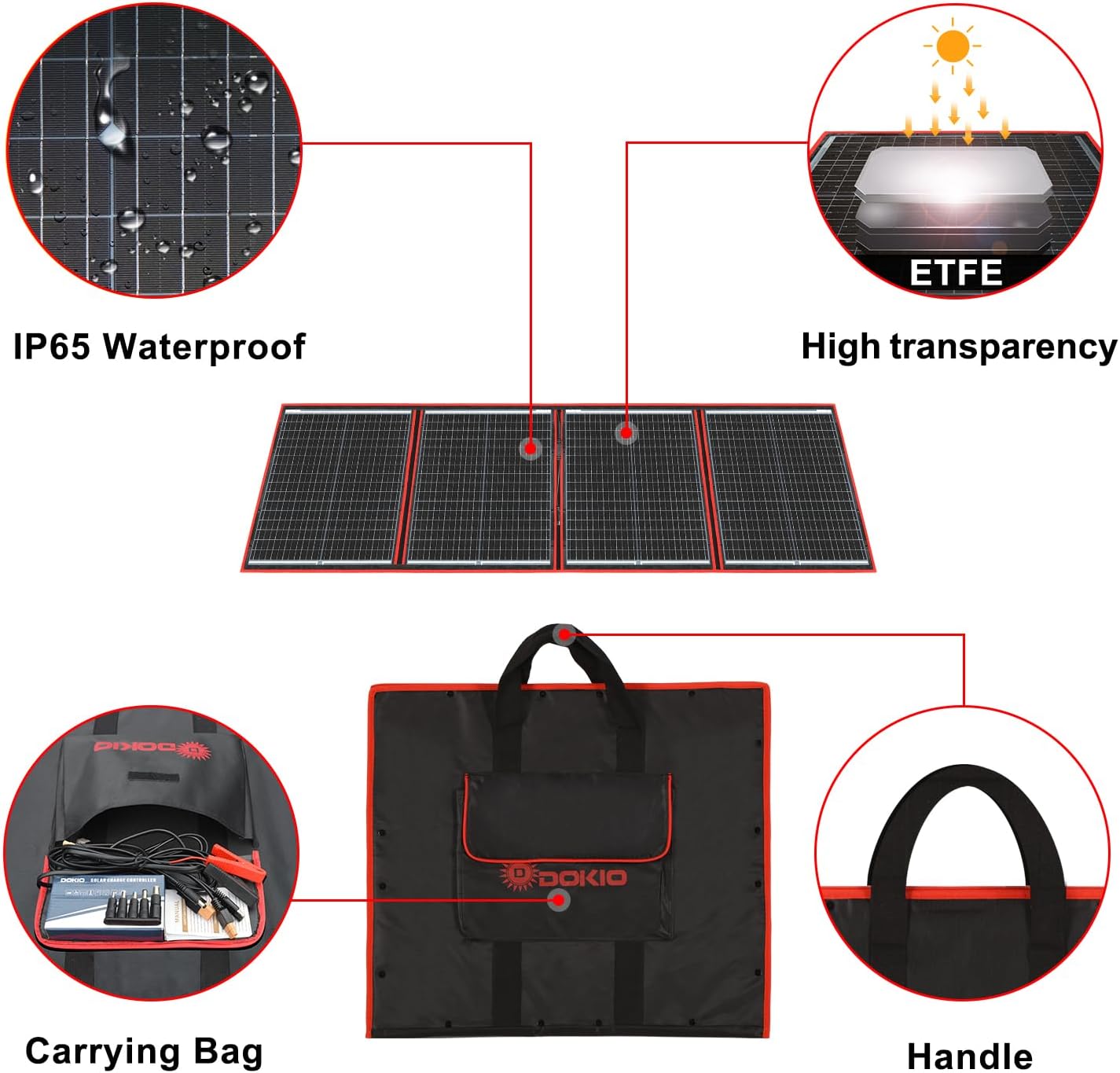
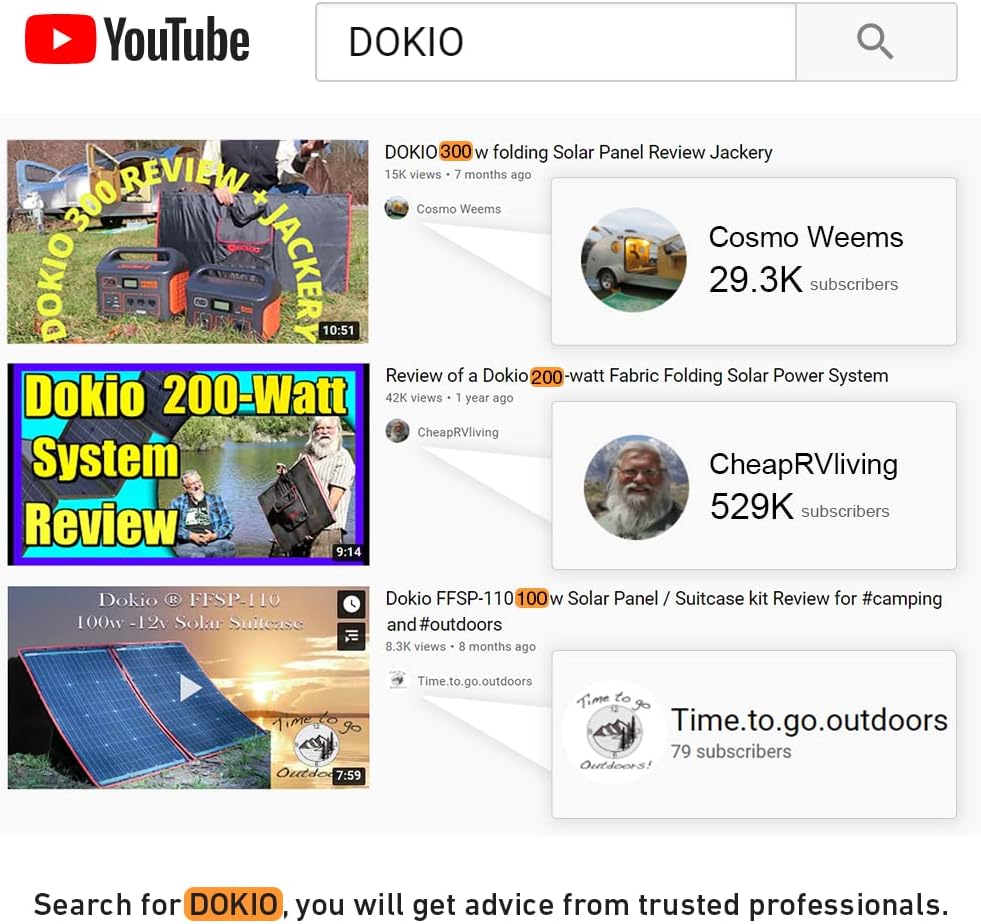













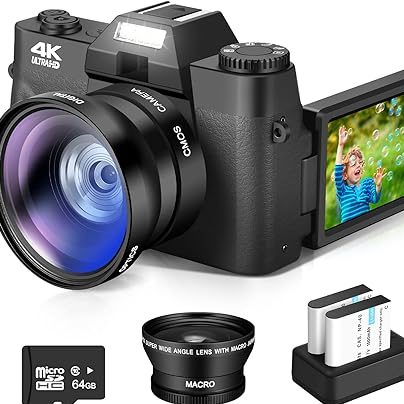

K. Peterson –
Works so well that I bought a third one.
Bought 2 of these and took them on an 8 day boondocking camping trip in my 5th wheel to charge my Goal Zero Yeti 1000 power station. My wife and I use the Goal Zero Yeti 1000 to run our CPAP machines at night. I also used them to charge the 5th wheel batteries. Because of several factors (like clouds and the way I just threw them flat on the ground), I still had to run my gas generator a few times. Here is what I discovered:1. I love these panels and just bought a third one. I also have two heavy Goal Zero 100W briefcase solar panels but they are so heavy I don’t like them. Much prefer the DOKIO 160W 18V Portable Solar Panels. Much easier to store.2. They never produced 160W but my Goal Zero 100W panels never produced 100W either.3. I love the battery management control box that comes FREE with the DOKIO 160W 18V Portable Solar Panel. I can hook it directly to my 5th wheel lead acid batteries and charge them to full capacity in a few hours (time varies because of lots of reasons).4. The cheaper DOKIO 160W 18V Portable Solar Panels don’t have a kick stand so I had to lay them against a rock or just lay them flat on the ground. This made them less efficient but I didn’t have to keep adjusting them like I had to do on the Goal Zero briefcase 100W ones.5. For the price of one 100W Goal Zero panel I can buy 2 DOKIO 160W 18V Portable Solar Panels.6. In the morning I lay them flat on the ground, hook them up and don’t mess with them until the sungoes down.7. I just bought a third one and hope I won’t have to run the gas generator at all (depending on the weather). If three isn’t enough I will buy a fourth one and leave the Goal Zero ones at home.Bottom line: If money is no problem the best solution is to have permanent solar panel system installed on the roof of your RV. But if you buy solar panels you can’t go wrong with these DOKIO 160W 18V Portable Solar Panels. Besides while I’m saving up for my home Tesla solar panels and back up batteries, I can use them at home for emergencies. Easy to lift and slim to store in the garage. Highly recommended.
Part Time Ninja –
DOKIO 160W Pro AND 220W Pro 18V Portable Solar, ETFE laminated, Monocrystalline panels.
Charged Bluetti EB3A solar generator with the 160W Pro and the 220W Pro panels on separate occasions.The Dokio160W Pro panel, fully charged the EB3A from 19% in just 2.1 hours, pretty good IMO. I noticed the watts input charge fluctuated from 98-105 watts, is that low, good, average? Could I have placed or aimed the panel better, maybe, but it was clear skies during the charge time. Anyhow, I liked the relatively short charge time.The Dokio 220W Pro panel input charge fluctuated from 128-140 watts under similar clear sky conditions, however, I used a clip-on solar panel sunlight aim device for the 220W panel and temporarily used chairs to fine tune the angle. However, it only made a 3-8 watt difference vs just eyeballing the angle. The EB3 calculated the 2.0 hours to fully charge from 0%.Both panels build and materials are very good, they should last many years.The 160W is lighter, easier to set up and maneuver than the 220W model. Buyers can decide which one to get, they are both good. Please note, the 220W specs indicate a max output of 200W.The panels include a voltage controller, a fistful of plug adapters and various cables to fit multiple solar generators. The plug adapters are too easy to drop and disappear while camping. Avoid those hassles and purchase an additional MC-4 to 8mm extension 10FT cable to keep things simple.
Gary S. Bate –
Small and light
For the money it’s a great option. You will not get 160 watts, closer to 100w. However I just use them as an addition to our rooftop solar in our RV. I built a kickstand on each panel. I changed the controller for an mppt variable voltage that was about $40 and use that to directly plug into our e bike batteries. That works great and charges them quickly and it’s set to automatically to stop at the correct charged voltage 54.6v. The bike controller confirms this. It takes on average 1-4 hours to charge depending on how low the battery is. I also charge our 1500w power station with it. I have a fused auxillary connect on my 2 x 75amp lithium coach batteries that I can connect to assist the roof top solar on cloudy days. The fabric does degrade in the sun. You can just use hvac reflective tape or duck tape etc when this happens. For a dollar a rated watt this is worth the money considering the cables and controller. Best to upgrade the controller. I have 2 mppt ones. 1 for bikes other for everything else. Make sure you don’t reverse polarity on the connectors, check with a multi meter and have extras of polarity connectors.
Patrick Langlois –
Super
karla –
Es ligero y dice bien y su regulador está increÃble, el único problema es que por más sol que habÃa no pude sacarle más de 80 watts
EDUARDO –
Producto bueno, no he tenido la oportunidad de usarlo al 100, pero ha pasado las pruebas
Alfonso Garcia –
Es ligero y eficiente, lo he usado sin problemas para cargar mis dos unidades Ecoflow River y River mini. Espero utilizarlo pronto para cargar baterÃas de 12 volts
007 –
Good value for the money